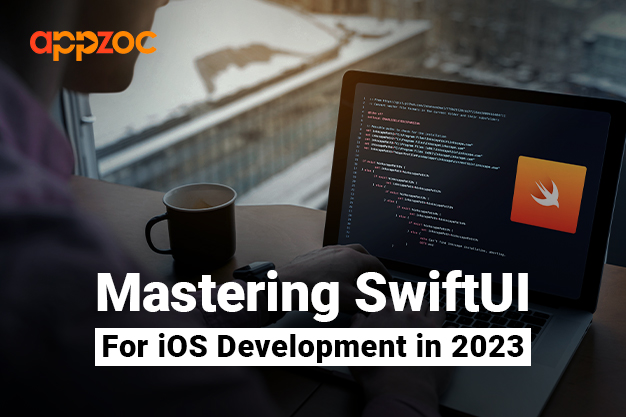
Flutter
Make the most of this cutting-edge technology by developing apps quickly! Our Flutter solutions have amazing features that can be used to create sleek, high-performance apps that can scale seamlessly across platforms.

The world of iOS development has seen a paradigm shift in recent years, with SwiftUI emerging as the frontrunner for creating stunning and efficient user interfaces. As we step into 2023, mastering SwiftUI has become imperative for every iOS developer. Whether you’re an individual developer in Kerala or part of an iOS app development company in Bangalore, understanding the intricacies of SwiftUI can set you apart in the competitive market.
SwiftUI, introduced by Apple in 2019, is a declarative UI toolkit that allows developers to design apps in a more intuitive and efficient manner. Unlike its predecessor, UIKit, SwiftUI provides a more streamlined approach to app development, making it easier to write and maintain code. This is especially beneficial for startups and established companies alike, as it reduces the time and resources required to bring an app to market.
Over the past few years, SwiftUI has undergone significant improvements. With each iteration, Apple has added more features, making it a comprehensive tool for iOS app development. In 2023, SwiftUI stands as a testament to Apple’s commitment to simplifying and enhancing the developer experience.
For businesses, especially those in regions like Kerala and Bangalore – known for their tech-savvy populations and booming IT sectors – SwiftUI offers a competitive edge. An iOS app development company in Bangalore, for instance, can leverage SwiftUI to deliver high-quality apps faster, meeting client demands more efficiently.
Declarative Syntax: One of the most significant advantages of SwiftUI is its declarative syntax. Instead of specifying the step-by-step process of creating an interface, developers can now define what the UI should look like, and SwiftUI takes care of the rest. This approach not only simplifies code but also makes it more readable.
Live Preview: This feature allows developers to see the real-time effects of their code. It eliminates the need for constant builds and runs, speeding up the development process.
Design Tools Integration: SwiftUI seamlessly integrates with design tools like Sketch and Adobe XD. This is a boon for designers and developers, as they can collaborate more effectively, ensuring that the final product aligns with the envisioned design.
Dark Mode and Accessibility: With just a few lines of code, developers can implement Dark Mode and accessibility features. This ensures that apps cater to a broader audience, enhancing user experience.
Multi-platform Development: One of the standout features of SwiftUI is its ability to cater to multiple Apple platforms, including iOS, macOS, watchOS, and tvOS. This means that developers can write code once and deploy it across various devices, saving time and effort.
India, with its burgeoning tech hubs in places like Kerala and Bangalore, is fast becoming a hotspot for iOS app development. The demand for skilled SwiftUI developers is on the rise. An ios app development Kerala is constantly on the lookout for talent that can harness the power of SwiftUI to create innovative apps.
For developers in these regions, mastering SwiftUI is not just about staying updated with the latest technology. It’s about positioning oneself in a market that’s ripe with opportunities. Whether you’re an independent developer looking to offer iOS app development in Kerala or aiming to join a leading iOS app development company in Bangalore, expertise in SwiftUI can be your ticket to success.
As we navigate through 2023, SwiftUI’s prominence in the realm of iOS development is undeniable. Its features, combined with its ability to streamline the development process, make it a must-learn for every developer. Regions like Kerala and Bangalore, with their thriving tech ecosystems, stand to benefit immensely from this shift.
For businesses and developers alike, the message is clear: Embrace SwiftUI, and you’re not just embracing a tool; you’re embracing the future of iOS app development.